Summary of Climate Disasters on the Planet from May 29 to June 4, 2024
Europe
Iceland
On May 29, a volcanic eruption recommenced on the Reykjanes Peninsula in Iceland. From a fissure approximately 3.4 km long near the Sundhnúkur crater, streams of lava began to erupt. Two hours before the eruption began, the Norwegian Meteorological Agency predicted the emergence of magma, after which a state of emergency was declared in Grindavik, and an urgent evacuation of the population began.
Scientists estimate that at peak moments, the eruption's power reached up to
2,000 cubic meters of lava per second.
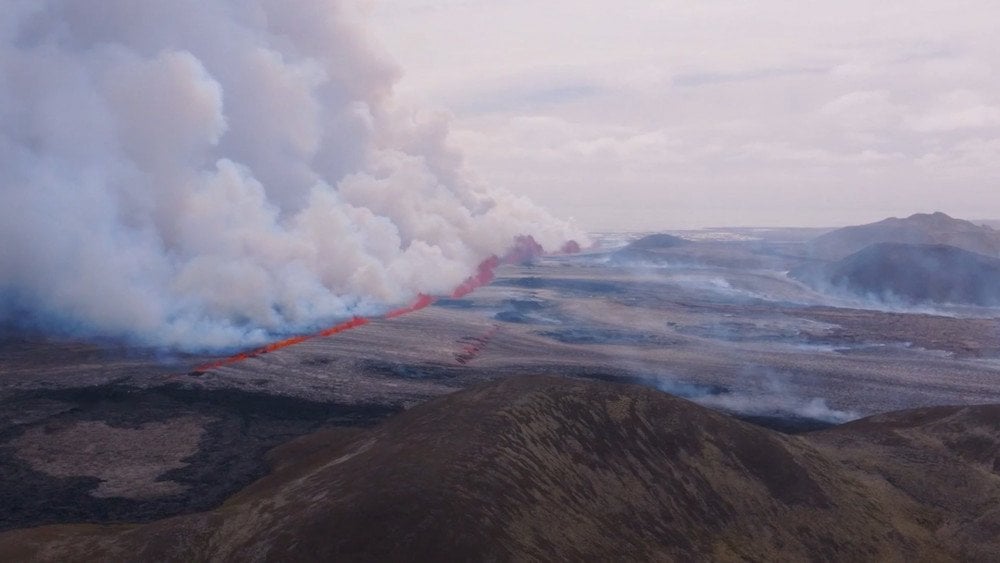
Volcanic eruption on the Reykjanes Peninsula in Iceland, May 29, 2024
Benedikt Gunnar Ofeigsson, head of the deformation measurement department at the Icelandic Meteorological Office, commented on the situation, “It was a colossal speed. It was much higher than we have seen before... Escaping from it would have been impossible.”
The eruption was preceded by a series of underground tremors: about 400 earthquakes were recorded near the Sundhnúksgígar crater row within 7 days before this event, the strongest of which had a magnitude of 2.2.
Since March 2021, this has been the eighth eruption on the Reykjanes Peninsula, and already the fifth in the Svartsengi system in the last six months.
Germany
From May 31, several days of heavy rain led to sudden deadly floods in southern Germany. At least 5 people died as a result of the natural disaster.
A state of emergency was declared in several regions of the country. The federal states of Bavaria and Baden-Württemberg were most affected, and a state of natural disaster was declared in three districts of Bavaria: Augsburg, Aichach-Friedberg, and Günzburg.
Many dams were destroyed and water flooded into settlements.
Entire towns were submerged under water
to a depth of several meters.
Residential areas began to resemble ghost towns.
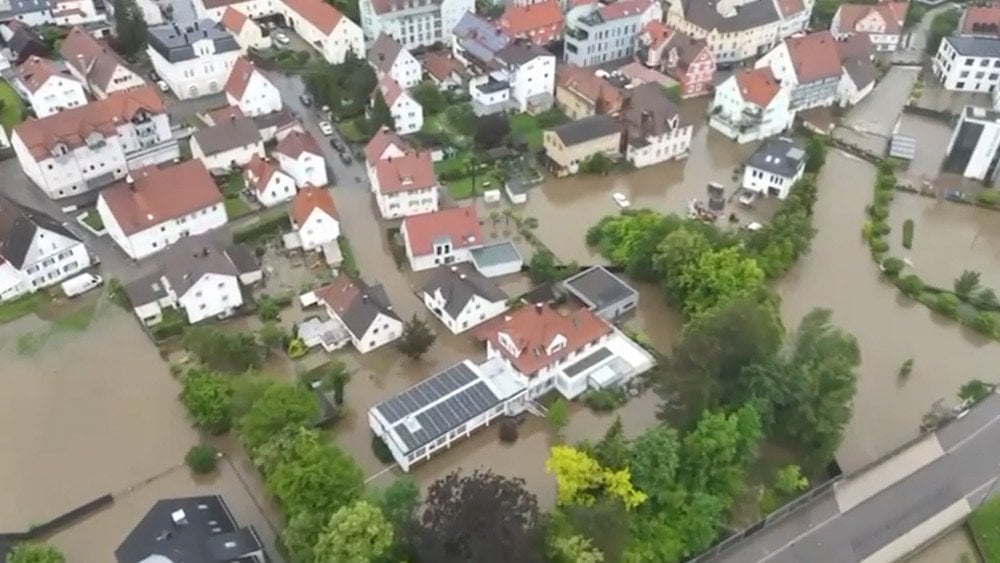
Major flood in Germany, June 2024
Busy highways and sections of railways were flooded and blocked.
An ecological disaster occurred in the Freising district, Upper Bavaria – as a result of the flooding, fuel oil spilled from damaged tanks. The oil slick was visible from the air.
On June 2, a passenger train derailed due to a landslide in Baden-Württemberg, near the town of Schwäbisch Gmünd. Fortunately, since the carriages did not overturn, none of the 185 passengers were injured.
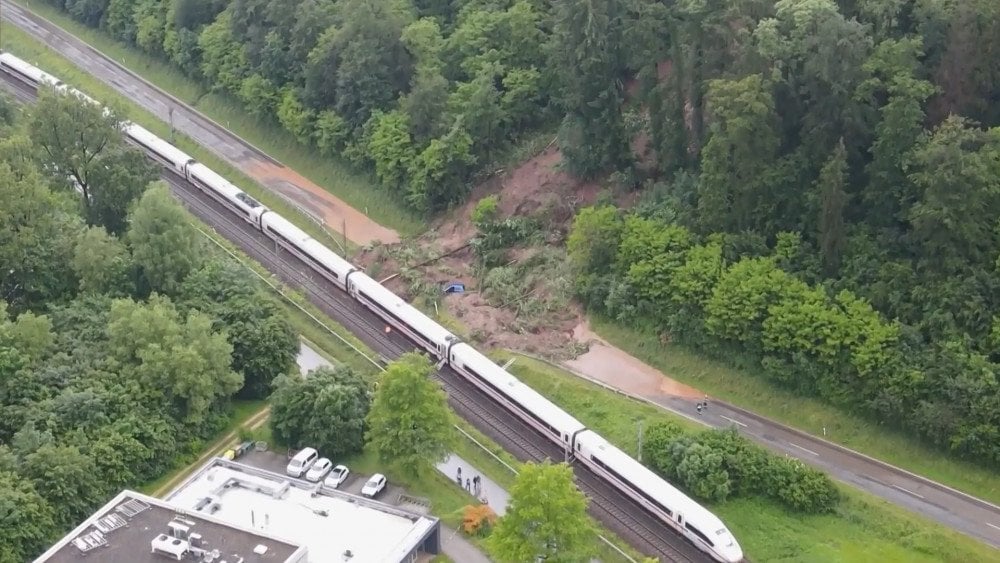
A landslide in Baden-Württemberg covered part of the highway, burying a passing car
The landslide also covered part of the highway, burying a passing car. The driver was miraculously rescued.
On May 31, in the community of Sigmarszell in Bavaria, 134.8 mm of rain fell in one day. Meanwhile, the average monthly precipitation for May in this area is 106.1 mm. People had to be rescued by boats, and some even by helicopter.
Over 6,000 people were evacuated from the affected areas.
On June 4, a state of emergency was declared in the town of Passau in Lower Bavaria due to worsening flood conditions. The Danube River exceeded the predicted peak by 10 meters. Streets and squares of Passau were closed due to flooding, school lessons were canceled. Traffic was disrupted.
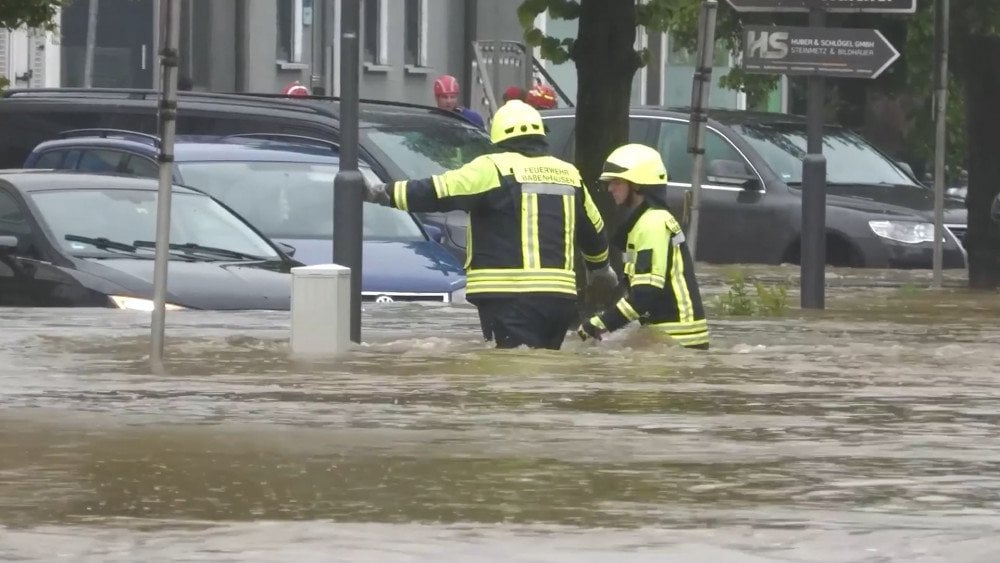
Streets and squares of the town of Passau in Lower Bavaria were closed due to flooding
To address the aftermath of the natural disaster, more than 60,000 rescuers were involved.
According to statistics, floods of that magnitude are supposed to occur no more than once a century. However, in recent years, such events have already happened with an interval of several years.
Russia
During the week from May 29, a series of powerful storms hit the European part of Russia. A vast area, from Arkhangelsk in the north to the Republic of Dagestan in the south of the country, suffered from large hail, squally winds, and abnormal downpours.
The following regions were hit by the storm: Karachay-Cherkess Republic, Stavropol Krai, Krasnodar Krai, Kursk Oblast, Pskov Oblast, Republic of Bashkortostan, Moscow Oblast, Nizhny Novgorod Oblast, Kurgan Oblast, Kaliningrad Oblast, Volgograd Oblast, Yaroslavl Oblast, Vladimir Oblast, Bryansk Oblast, Republic of Karelia, Leningrad Oblast, Republic of Tatarstan, Arkhangelsk Oblast, Tambov Oblast, Samara Oblast, Voronezh Oblast, Republic of Kalmykia, and Republic of Dagestan.
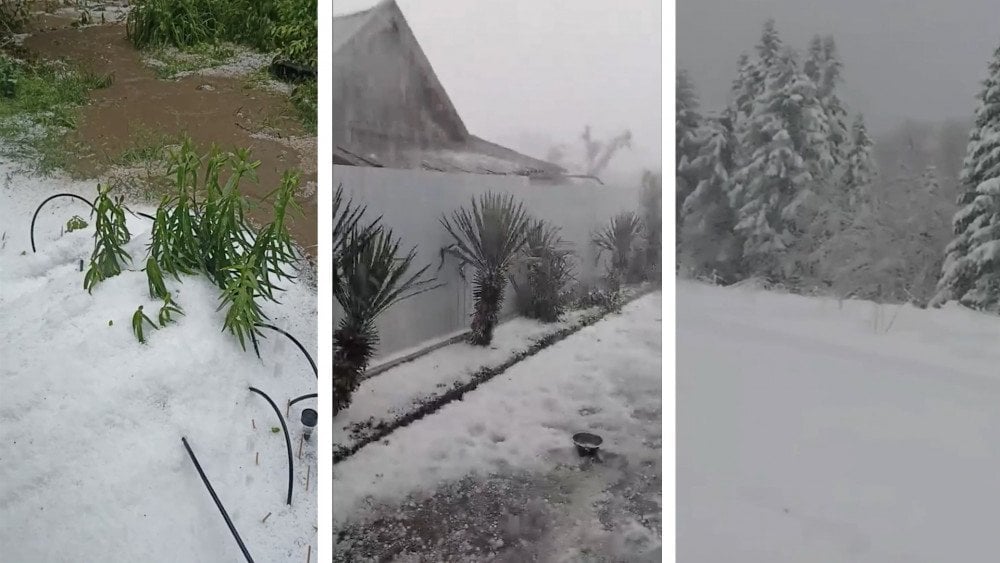
The European part of Russia was hit by a series of powerful storms
On May 30 and 31, large hail, sometimes the size of a chicken egg, struck the Krasnodar and Stavropol Krais.
In some places, the hail was so intense that the ground was covered with a layer of ice. Large hailstones damaged cars and roofs of houses. The damage to agricultural lands was huge.
In several districts of Stavropol, more than 60% of the monthly precipitation norm fell in one day. In one of the villages, squally winds toppled an advertising structure with a concrete base and part of the solar panels, tore off roofs in some households, and knocked down trees onto gas pipes and power lines. About 9,000 people were left without electricity.
On May 31, in the city of Cherkessk, one person died and about thirty were injured due to the rampage of the storm. Tower cranes could not withstand the gusts of wind. Hundreds of cars and more than 600 buildings were damaged.
According to local residents, this was the strongest hurricane in Karachay-Cherkessia
in the last 20 years.
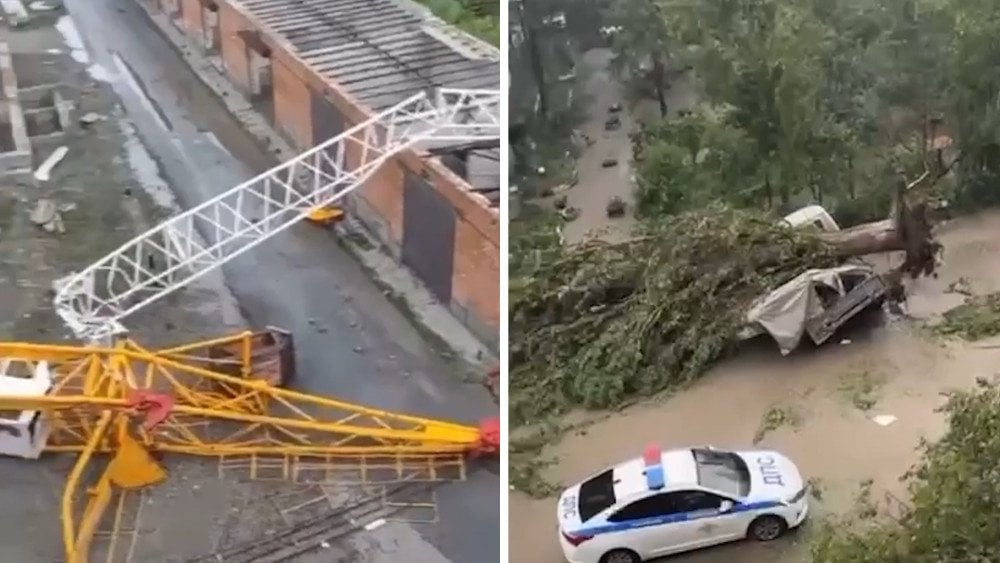
In Cherkessk, hurricane winds felled tower cranes and huge trees
In the second half of the day on May 31, after abnormal heat, a downpour hit Moscow. In the western part of the capital, in the Krasnogorsk area, 45% of the monthly precipitation norm fell in just a few hours. The downpour was accompanied by lightning and powerful thunderclaps. In the Moscow suburb of Balashikha, a lightning strike killed a man.
On June 2, a cloudburst caused flooding on the streets and avenues of the city of Kaliningrad. Basements and lower floors of buildings were flooded. Water flowed from the ceilings in shopping centers. Many cars were submerged up to their roofs.
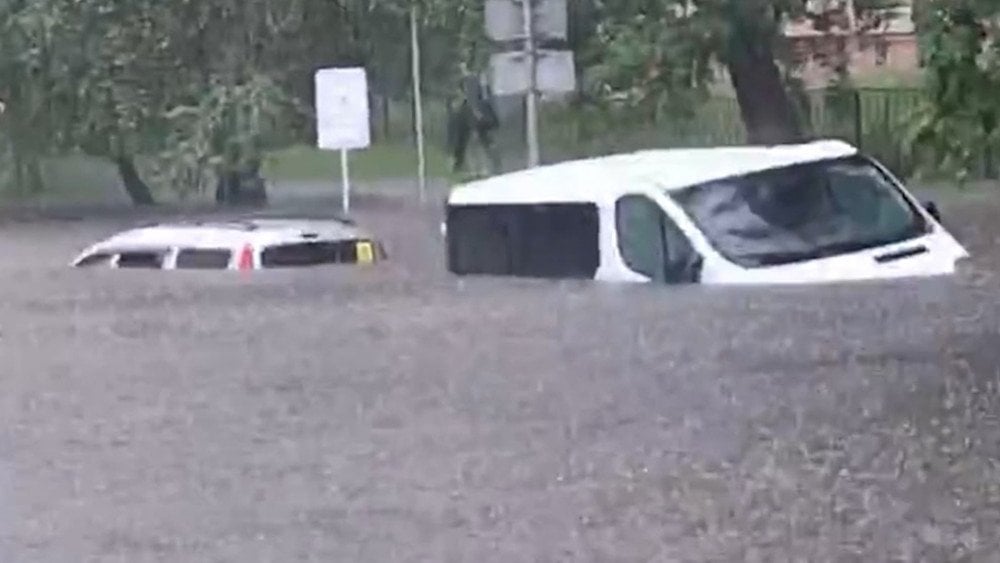
In Kaliningrad, cars submerged up to their roofs
Asia
China
In China, climate disasters occur almost daily.
On May 30, the weather in Beijing changed suddenly in just a few seconds. Residents of the capital shared on social networks their impressions of how a sunny day suddenly turned into night, a storm began with heavy rain and hurricane winds with gusts exceeding 37 m/s.
Large trees were uprooted, many of which fell on cars and blocked roads, tiles and roof tiles fell from houses onto pedestrians. Powerful gusts of wind knocked people off their feet. Hurricane winds caught industrial climbers off guard, while they were working on the facade of a skyscraper, causing them to sway at a great height. Miraculously, they managed to avoid injuries and descend to the ground.

Hurricane wind in Beijing knocked people off their feet and swayed industrial climbers at a great height
On June 1, Typhoon Maliksi hit the coast of Guangdong Province, almost a month earlier than usual.
The highest level of danger was declared in Guangxi Province due to heavy rains, which from June 2 covered the Fengshan County, causing widespread flooding.

Major flood in Guangxi Province in China
Many regions of China were affected by flooding. According to the regional water resources management on June 5, the water level in 37 rivers in the country exceeded critical marks, in some places by more than 2 meters.
More than 23,000 people were affected by heavy rains in the Guangxi Zhuang Autonomous Region alone.
Japan
Early in the morning on June 3, residents of Ishikawa Prefecture in Japan were frightened by a new powerful earthquake of magnitude 5.9. According to the Japan Meteorological Agency, the epicenter of the earthquake was in the Noto area, at a depth of about 10 km. A few minutes after the first tremor, another one with a magnitude of 4.8 followed.
The seismic events occurred in the same area that is still trying to recover from the enormous damage after the earthquake in January. Damaged homes in mountainous areas remain in a destroyed state, and more than 3,300 residents of the prefecture are forced to stay in temporary accommodation centers.
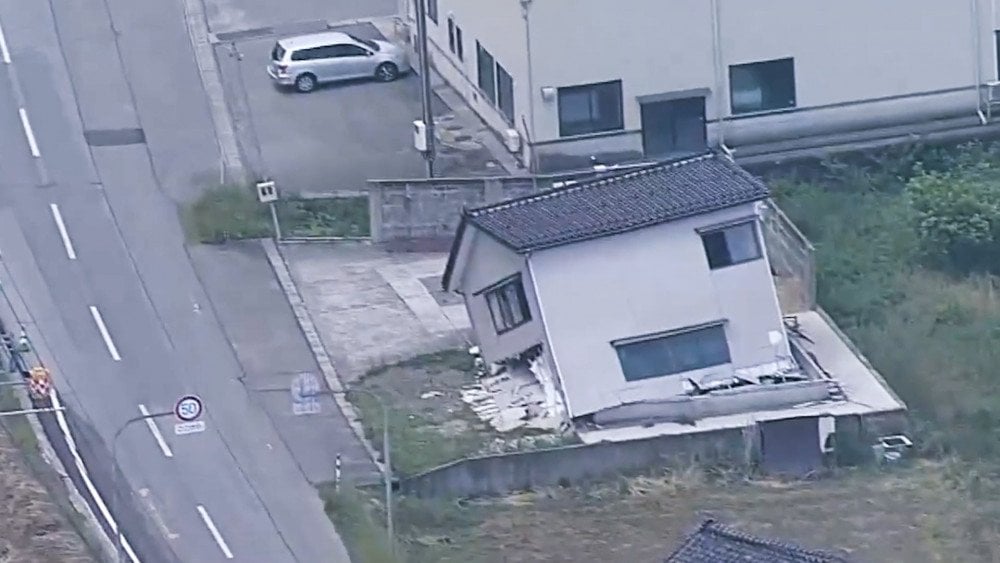
Houses damaged by the earthquake in the Noto area of Ishikawa Prefecture in Japan
Due to the shallow depth of the hypocenter, the earthquake was felt over a wide area. In the cities of Wajima and Suzu in Ishikawa Prefecture, tremors of magnitude over 5 were registered. Weaker seismic activity was recorded in the Tohoku and Chugoku regions.
Train services were suspended. In the city of Joetsu, cracks appeared in buildings. In the city of Wajima, several houses that had already been damaged by the earthquake on January 1, 2024, collapsed.
Taiwan
On June 3, a massive landslide occurred in the city of Keelung on the island of Taiwan. Beining Road was blocked. The city's fire service reported that nine vehicles were damaged, two of which were crushed by debris. Two people were injured and taken to the hospital.
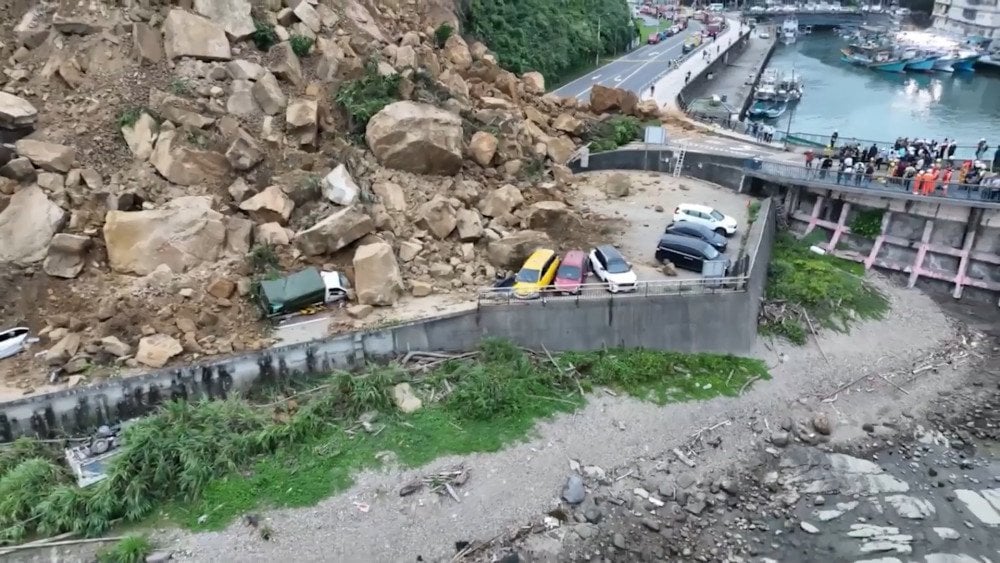
Vehicles damaged by the landslide near the city of Keelung on the island of Taiwan
The Taipei city fire service sent rescuers and search dogs to the site to ensure that no one was trapped under the debris.
Since Beining Road runs along the coast, divers were also sent to check the coastal area for any victims.
USA
On May 29, in the city of Marathon, Texas, USA, within an hour the temperature dropped by 30°C, from 41°C to 10°C.
The remarkable drop in temperature was accompanied by an abnormal amount of hail. The height of the snowdrifts reached 60 cm.
The chief of the Marathon Fire Department reported that within an hour, weather conditions had turned from summer to winter. About 60 cm of hail fell on the city's main street, resembling snow.

Hailstorm in the city of Marathon, Texas
Snow removal equipment had to be used to clean the streets.
South Africa
According to the South African Weather Service (SAWS), from June 3 to 4, strong winds, at least two tornadoes, hail, snow, and heavy rains hit South Africa.
The provinces of KwaZulu-Natal and Eastern Cape were severely affected. At least 22 people died and more than 55 were injured. Over 2,000 local residents were evacuated from dangerous areas.
In the city of Tongaat, KwaZulu-Natal province, where a devastating tornado passed, significant damage was caused to infrastructure: schools, roads, public buildings, and medical facilities were affected. Hundreds of houses were seriously damaged or destroyed. Heavy rain damaged transformers and power lines, leaving residents without electricity. Mobile communication towers were also affected.
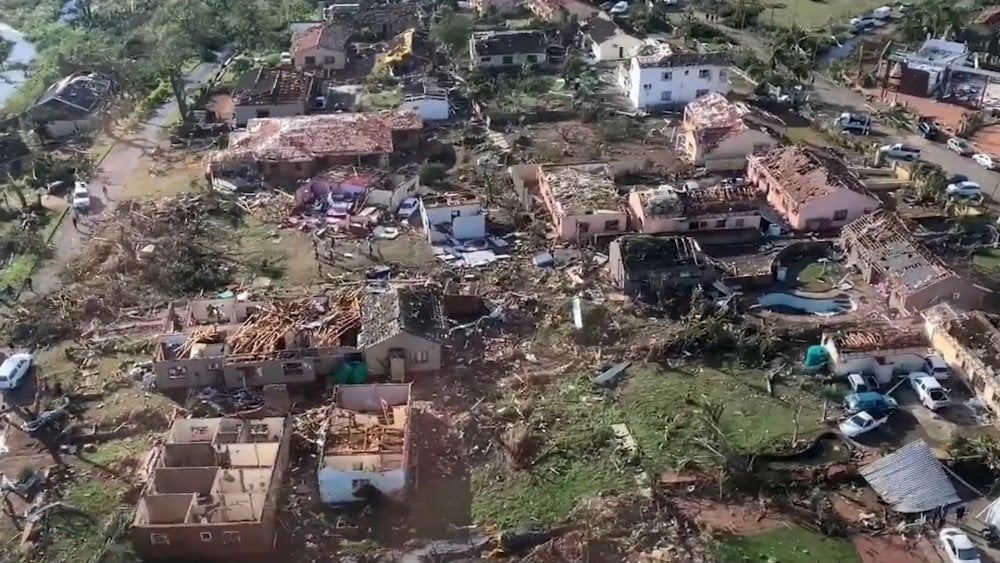
Destroyed houses after a tornado passed through the city of Tongaat, KwaZulu-Natal province
Local residents were shocked by the scale of the event. One of them said, “I never thought that something like this could ever happen in our area. I always felt like this area is safe.”
Some people in Tongaat, who lost their homes, were housed in public buildings, but most preferred to stay in the ruins of their homes for fear that their belongings would be stolen.
In the Eastern Cape province, floods destroyed roads and homes. According to the South African Weather Service (SAWS), some areas of the province experienced the wettest June day in the history of observations.
The powerful storm was preceded by unseasonably high temperatures, which were followed by a sudden cooling and early snowfall. 30-centimeter-high snowdrifts, gigantic for the region, formed, causing several roads in the province to be blocked.
And in the Northern Cape province,
snow fell for the first time in about 40 years.

Abnormal snow in the Northern Cape province, South Africa
Lightning
As our planet heats up, the number of lightning strikes is rapidly increasing. According to scientists at the University of California, a 1-degree increase in air temperature increases the number of atmospheric electrical discharges by 12%.
At the same time, thunderstorms are increasingly leading to tragic consequences.

Rescuers work at the site of a tragedy after a lightning strike in the Czech Republic
On May 30, in Russia, in the Nizhny Novgorod region, a man died during a river trip. According to his wife, who was nearby at the time, a cloud appeared in the almost clear sky, and then lightning struck the boat.
On May 31, in the city of Balashikha, Moscow region, lightning killed a man walking down the street, hitting an umbrella with which he was sheltering from the rain.
On the same day in Azerbaijan, lightning strikes killed three people, and another was seriously injured. Incidents occurred in several districts in the western part of the country.
On June 2, in the Czech Republic, lightning struck a playground in a park where a children's festival was taking place at the time. Eighteen people were injured, half of them children. Some of the injured were successfully resuscitated on the spot. At least seven people remain in critical condition in the hospital.
Over 10 years, lightning has become twice as long and lasts longer.
Super lightning has appeared, the power of which is a thousand times greater than usual.
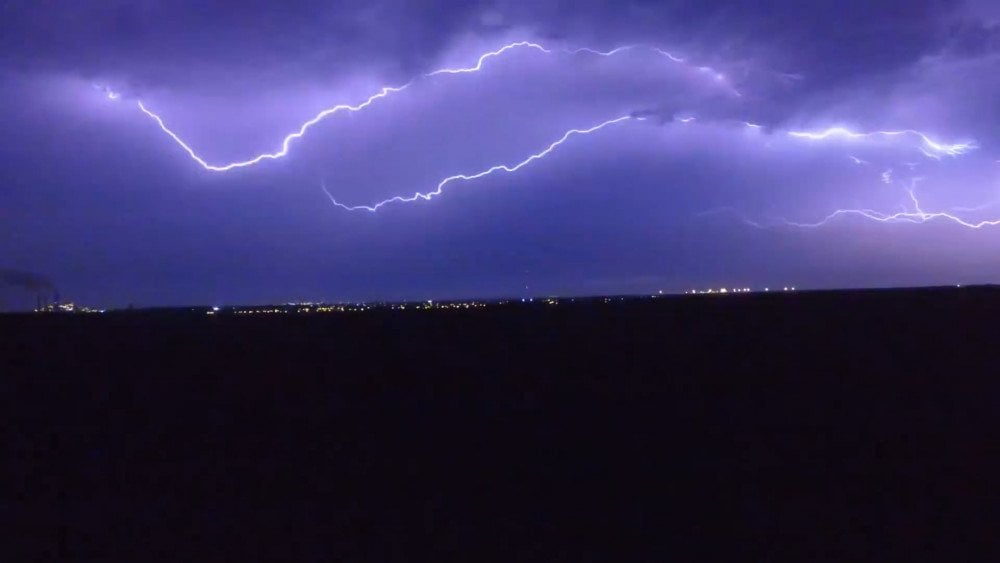
Huge lightning bolts split the sky
The average number of lightning strikes in the Arctic region, including Canada, Siberia, Alaska, and the Arctic Ocean, has risen from about 18,000 a year to over 150,000. A similar increase is observed across the planet.
Dry thunderstorms have become more frequent (these are thunderstorms that occur with no or minimum precipitation). They are the cause of major wildfires.
Rare winter thunderstorms have also started to appear.
Lightning is linked not only to the atmosphere but also to processes occurring in the depths of the Earth. Our planet is now entering a 12,000-year cycle of climate disasters, during which the Earth's core is subjected to cosmic influence and receives enormous additional energy.
This energy and charged particles from the depths of the planet lead to the redistribution of charges, enhanced ionization of the air, and, as a result, the formation of lightning.
It is clear that the physics of thunderstorm processes is changing dramatically. The same catastrophic changes take place in all natural phenomena on the planet.
Now all sensible people wonder what awaits us further. To answer this question and understand how to prevent a planetary disaster, we recommend that you watch the forum “Global Crisis. The Responsibility.”
Watch the video version of this article here:
Leave a comment